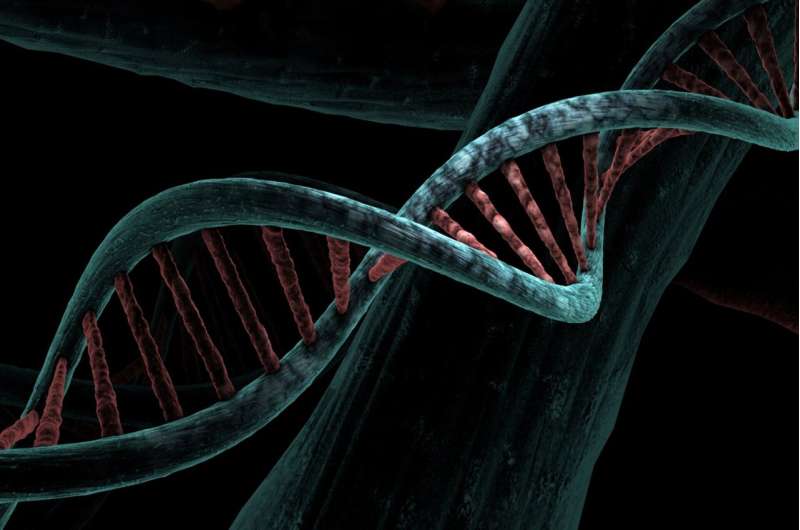Researchers identify new disorder of copper metabolism, caused by variants in CTR1 gene

Copper is essential for many cellular functions, including cellular respiration, antioxidant defense, neurotransmitter biosynthesis and neuropeptide amidation, among others. Until recently, only two inborn errors of copper metabolism were well established. Both are rare. Wilson's disease and Menkes disease result from mutations in the copper-transporting P-type ATPases; ATP7B and ATP7A, respectively.
CTR1 is a high-affinity copper uptake protein essential for mammalian development and copper homeostasis, as well as progression of certain cancers. Until recently, no cases of human CTR1 deficiency were reported.
Now, in a study published in Human Molecular Genetics, Stephen Kaler, MD, MPH, and his colleagues report the first description of CTR1 deficiency due to a homozygous missense mutation of the CTR1 gene in two children. They also present the associated clinical, biochemical and molecular phenotypes of this deficiency.
Identical twin boys with the same missense mutation in the CTR1 gene both presented with hypotonia, global developmental delay, seizures and rapid brain atrophy after appearing well for the first two months of life. Brain imaging indicated more atrophy than in children with untreated Menkes disease.
The team used clinical phenotyping, brain imaging, assays for copper, cytochrome c oxidation and mitochondrial respiration, western blotting, cell transfection experiments, confocal and electron microscopy, protein structure modeling and fetal brain and cerebral organoid transcriptome analyses.
"This paper represents the culmination of an extraordinary international collaboration spanning contributions from five countries and eight different institutions, all focused on efforts to diagnose, understand, and treat two infants with a previously unrecognized inborn error of human copper metabolism," said Dr. Kaler, senior author of the publication and principal investigator in the Center for Gene Therapy at the Abigail Wexner Research Institute.
The team also evaluated the effects of copper histidinate in the patients' cultured cells, and under a formal research protocol, in the patients themselves.
"In the cell cultures, the copper histidinate treatment normalized cytochrome c oxidase activity and enhanced mitochondrial respiration," said Dr. Kaler. "In the patients, we saw modest clinical improvements. Growth improved and serum copper levels increased, but overall clinical improvements were limited, possibly because of pathology sustained before the treatment was initiated."
In combination with present and prior studies, these infants' clinical, biochemical and molecular phenotypes establish the impact of this novel variant on copper metabolism and cellular homeostasis and illuminate a crucial role for CTR1 in human brain development. CTR1 deficiency represents a newly defined inherited order of brain copper metabolism.
"The research findings are highly relevant to our further understanding of copper transport into and within the brain and may lead to advances in developing remedies for this disorder and other human illnesses, including cancer," Dr. Kaler says. "We are indebted to these children and their devoted parents for participating in this study."
More information: Spyros Batzios et al, Newly identified disorder of copper metabolism caused by variants in CTR1, a high-affinity copper transporter, Human Molecular Genetics (2022). DOI: 10.1093/hmg/ddac156


















